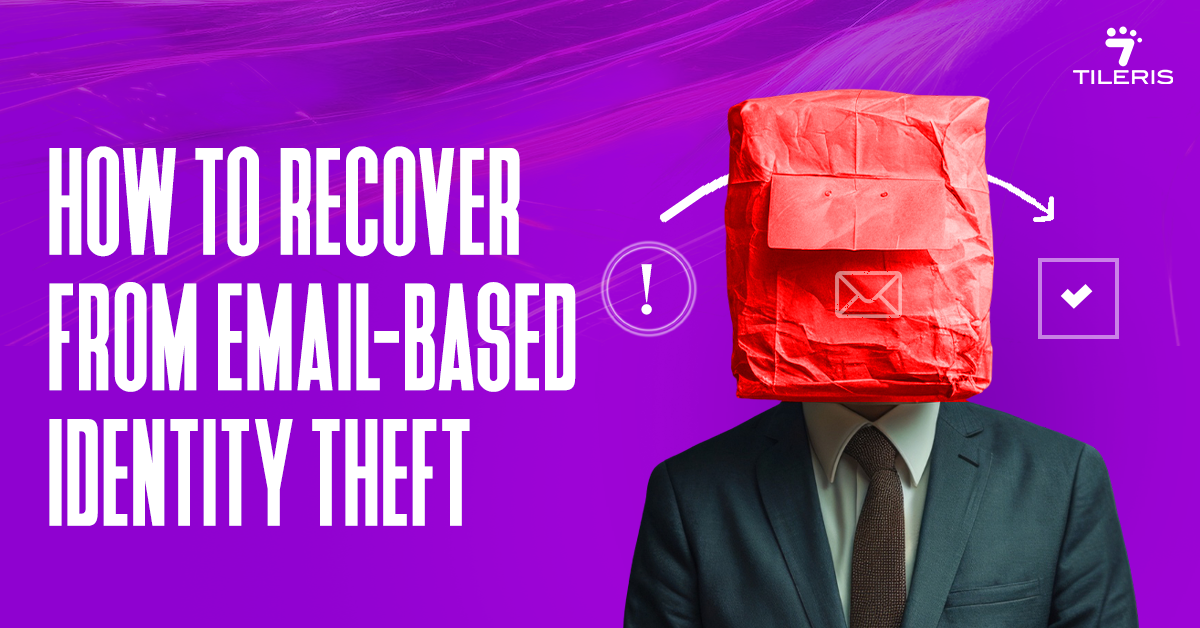How to Recover from Email-Based Identity Theft
Introduction
In today’s interconnected world, where our digital lives often mirror our physical ones, the email inbox has become a central hub for everything from personal communications to financial transactions. This very centrality, however, makes it a prime target for cybercriminals. The growing threat of email-based identity theft is a stark reality, impacting not just individuals but businesses as well. It’s a frightening experience that can lead to significant financial loss, reputational damage, and immense stress. But if you find yourself a victim, don’t despair. The purpose of this article is to provide a clear, step-by-step guide on how to recover from email-based identity theft, helping you reclaim your digital security and peace of mind.
Understanding Email-Based Identity Theft
Email-based identity theft isn’t a single, uniform attack. It comes in various forms, each designed to trick you into revealing sensitive information or giving up control of your accounts.
- Phishing and Social Engineering Attacks: This is often the starting point. Cybercriminals send fake emails (phishing) that look legitimate, perhaps from your bank, a government agency, or a popular online service. These emails are designed to trick you into clicking malicious links or downloading infected attachments. Social engineering amplifies this by playing on your emotions (fear, urgency, curiosity) to get you to reveal sensitive data like passwords, bank details, or even your Social Security number.
- Email Account Hacking and Takeover: This occurs when an attacker gains unauthorized access to your email account. This could be due to a weak password, a successful phishing attempt, malware on your device, or even a data breach from another service that exposed your login credentials. Once inside, they can read your emails, send messages as you, reset passwords for other linked accounts (like social media or online banking), and generally wreak havoc.
- Identity Theft Through Email Spoofing: In this scenario, criminals send emails that appear to be from you, your company, or a trusted individual, but they are entirely fake. The goal is to deceive your contacts or clients into believing the email is legitimate, often to steal money, sensitive information, or spread malware. Your actual email account might not be compromised, but your identity is being misused.
Immediate Action: The Crucial First Hours
If you suspect or discover email-based identity theft, acting fast is paramount. Every minute counts.
- Change Passwords and Enable Two-Factor Authentication (2FA):
- Start with your compromised email account: If you can still access it, immediately change your password to something strong and unique.
- Enable 2FA/MFA: This is non-negotiable. It adds an extra layer of security, requiring a code from your phone or an authenticator app in addition to your password. Even if they have your password, they can’t get in without the second factor.
- Change passwords for ALL linked accounts: Think of every online service that uses that email address for login or password resets (banking, social media, shopping sites, utilities). Change those passwords too. Prioritize financial accounts.
- Notify Email Providers and Financial Institutions:
- Contact your email provider (e.g., Google, Microsoft, Yahoo): Report the account compromise immediately. They have dedicated teams and procedures to help you secure and potentially recover your account.
- Alert your bank and other financial institutions: If any financial information was compromised or fraudulent transactions occurred, contact your bank, credit card companies, and mobile money providers immediately. Monitor your statements diligently.
- Monitoring Accounts for Suspicious Activity:
- Check email activity logs: Most email providers offer a way to see recent login activity. Look for unrecognized logins or unusual IP addresses.
- Review bank and credit card statements: Scrutinize every transaction for anything you don’t recognize.
- Check online accounts: Look at your social media, e-commerce, and other online accounts for unusual posts, purchases, or profile changes.
Recovering from Identity Theft: Reclaiming Your Digital Life
Once the immediate threat is contained, the recovery process begins. This involves documenting the incident and increasing your defenses. Firstly, report the incident to the authorities:
- Federal Trade Commission (FTC): Report the identity theft to the FTC at IdentityTheft.gov. This is your primary hub for reporting and will help you create a personalized recovery plan.
- Internet Crime Complaint Center (IC3): You can file a complaint with the FBI’s IC3. This helps law enforcement track cybercrime trends.
- Local Police Department: File a police report. This can be crucial for disputing fraudulent charges or for insurance claims.
- Credit Bureaus (Equifax, Experian, TransUnion): Place a fraud alert or freeze on your credit reports. This prevents new credit accounts from being opened in your name.
Updating Security Settings and Software:
- Perform a full system scan: Use reputable antivirus/anti-malware software to scan all your devices (computers, phones) for any lingering malware.
- Update all software: Ensure your operating system, web browsers, and all applications are fully updated. These updates often contain crucial security patches.
Review privacy settings: Revisit the privacy and security settings on all your online accounts, especially social media, to ensure they are locked down.
Notifying Contacts and Friends About the Incident:
- Send a warning email: If your email account was used to send spam or phishing messages to your contacts, send a follow-up email (from a secure, uncompromised account if possible) to warn them. Advise them not to open suspicious emails that appear to be from you and to delete them immediately. This helps protect them and your reputation.
- Post on social media: If appropriate, put out a warning on your social media channels (e.g., Facebook, WhatsApp status) to inform your wider network.
Preventing Future Attacks: Building a Stronger Shield
Recovery is a chance to learn and fortify your defenses. These practices are crucial to prevent future incidents.
- Using Strong and Unique Passwords:
- Never reuse passwords across different accounts.
- Use a password manager to generate and store complex, unique passwords for you.
- Aim for passwords that are long (at least 12-16 characters) and combine uppercase, lowercase, numbers, and symbols.
- Being Cautious with Email Attachments and Links:
- Think before you click: Hover over links to see the actual URL before clicking. If it looks suspicious or doesn’t match the sender, don’t click.
- Verify attachments: Never open attachments from unknown senders or if they seem out of character from a known sender. If in doubt, contact the sender via a different communication channel (e.g., phone call) to confirm legitimacy.
- Be wary of urgency or emotional manipulation: Phishing emails often create a sense of urgency (“Your account will be closed!”) or appeal to emotions.
- Regularly Updating Software and Security Patches:
- Enable automatic updates for your operating system, web browsers, and all applications.
- These updates contain crucial security fixes that patch vulnerabilities exploited by attackers.
Additional Resources
Navigating identity theft can be overwhelming. Here are some resources that can offer further support:
- Identity Theft Protection Services: Companies like Experian, TransUnion, or local Nigerian alternatives (check with your bank for recommendations) offer monitoring services that alert you to suspicious activity related to your personal information.
- Online Security and Support Forums: Websites like Reddit’s r/cybersecurity or specialized security blogs often have communities where you can find advice, share experiences, and learn from others’ recovery journeys.
Conclusion
Falling victim to email-based identity theft is a deeply unsettling experience, capable of causing significant disruption and distress. However, paralysis in the face of such a threat is not an option. By taking immediate, decisive action, securing compromised accounts, notifying relevant authorities and financial institutions, and monitoring your digital footprint, you lay the groundwork for effective recovery.
Beyond the immediate crisis, this experience should serve as a powerful catalyst to prioritize your email security. Embrace strong, unique passwords, enable multi-factor authentication, cultivate healthy skepticism towards suspicious emails, and keep all your software meticulously updated. Proactive measures are your best defense, not just for recovery, but for preventing future attacks and maintaining a secure, uncompromised digital life.
To learn more about protecting your digital life, visit tileris.com






